During our road trip through southern and western Iceland, endless possibilities to sample unusual foods like local fish and puffin meat crossed our path, but oftentimes we had to discreetly back off as the sad truth is only one: eating in Iceland is horribly expensive. I know that that is part of the tourism system and I, as a visitor, should try to help the local economy as much as I can, but food – especially in restaurants – proved just so incredibly overpriced that I just couldn’t.
I am the kind of thifty soul who tends to prefer a more convenient home-made meal over a more fun restaurant experience, but when I travel I like to splurge and try the local cuisine. The problem is that when the local cuisine ends up costing as much as your flight ticket, the money-saver in me takes over my epicurean self. By the way I flew WOWair and had a very positive experience flying with them for the first time.
A couple of weeks before leaving I had asked an Iceland-born acquaintance if it was really worth trying the hákarl, the famous rotten fermented shark proudly made and enjoyed only in Iceland. She said it was not worth it. It’s just disgusting, it’s mostly for old people very attached to traditions and for tourists who want to try the experience, according to her. She recommended I’d try the Icelandic lamb meat soup, or puffin meat, instead. So when I had my first encounter with hákarl in the supermarket I chose to listen to this local’s advice and steered clear.
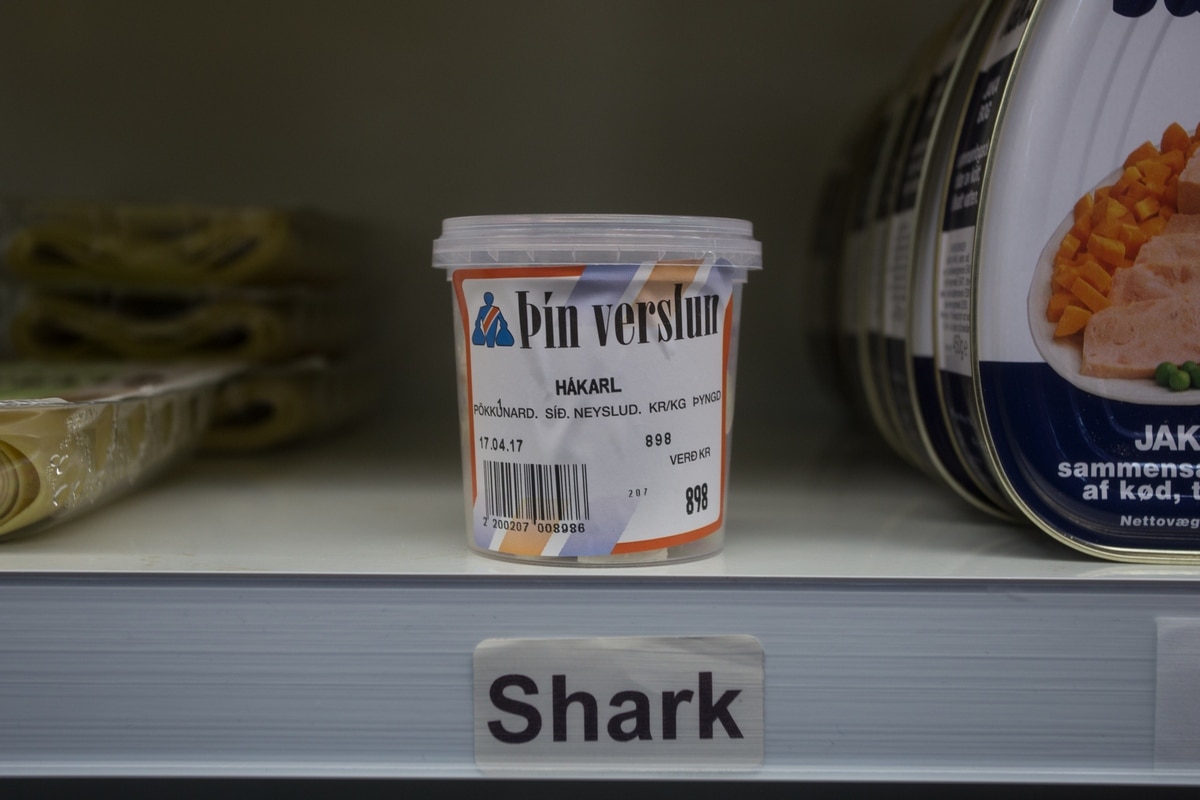
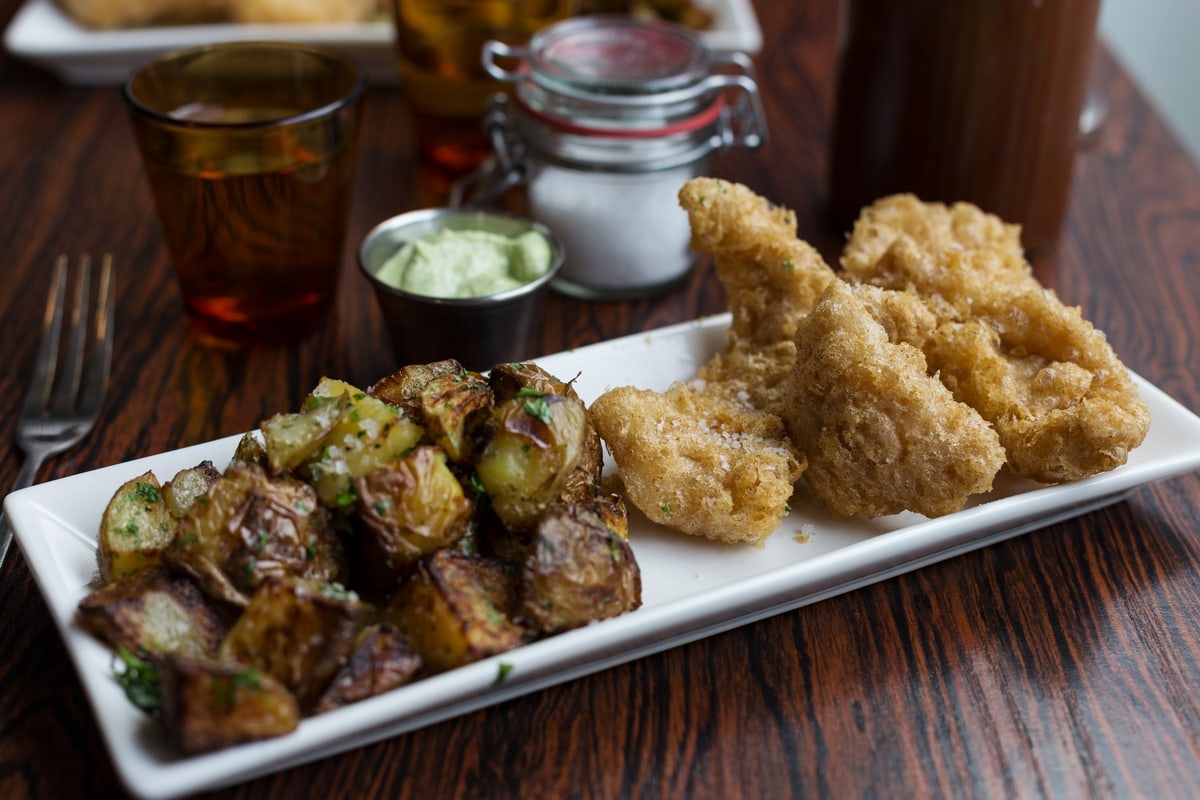
So what we fed on during basically all of our trip were foods we would regularly buy at local supermarkets. Staying in cottages or guesthouses we always had access to a kitchen, so for lunch we would pack our sandwiches and for dinner we would make our pasta. This helped us save a huge lot of money on food, and provided me with the exciting opportunity to visit local supermarkets. At supermarkets I feel like I’m truly immersing myself into the local life and I get really excited when I discover new foods as well as when I come across familiar ones. You can imagine the state of wild glee I was in when in the most remote supermarket in Iceland I found a whole section dedicated solely to Polish food. A little piece of Poland in the middle of the Atlantic Ocean!
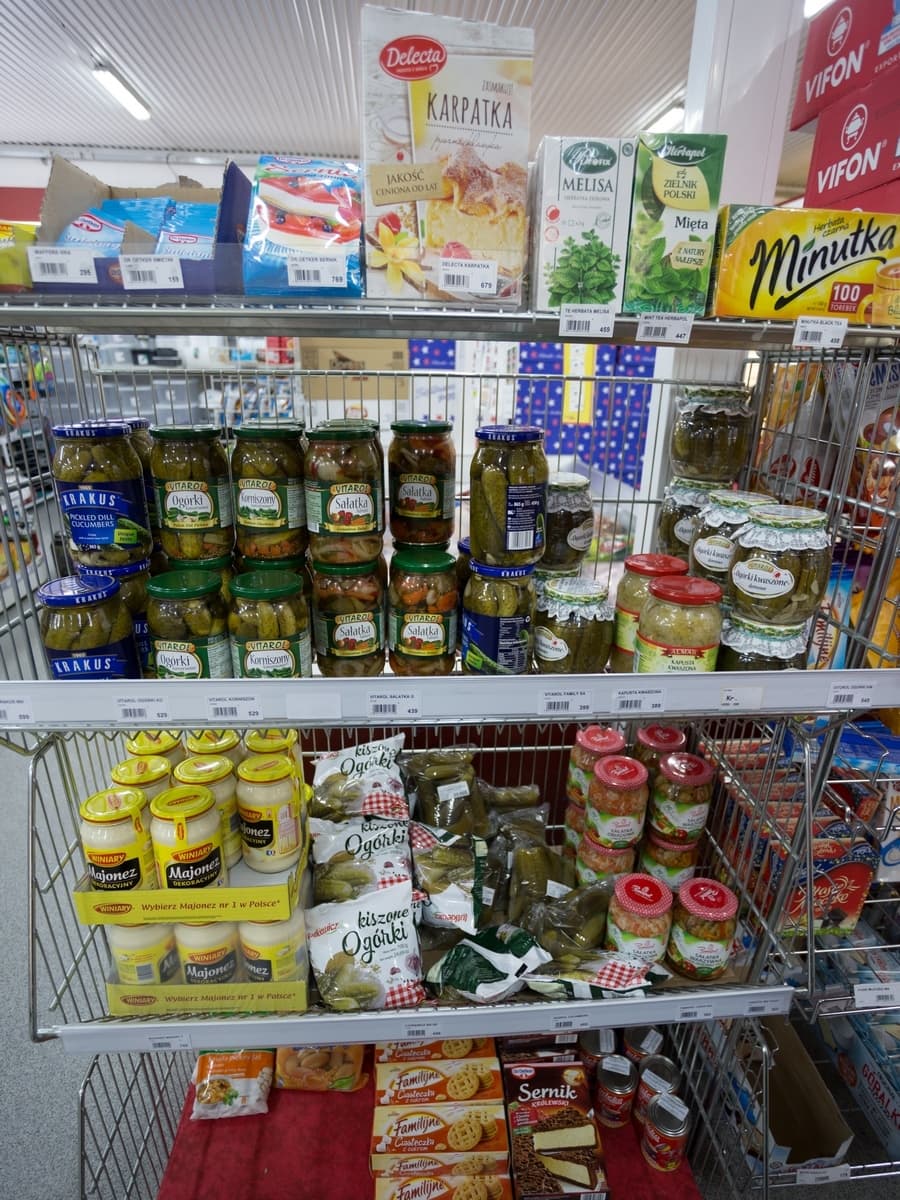
So on the very last day of the trip, coming back from the Snæfellsnes peninsula, we stumbled upon a local tourist attraction, the shark museum at Bjarnarhöfn. Intrigued, we stopped to visit. The museum is located on a farm that is one of the very few places that produce and commercially distribute hákarl. Yes, the terrible fermented shark I had tried to avoid throughout the whole week. At the museum we got to learn a lot of interesting facts about this traditional food and its production, as well as about the Greenland shark, which is the species used for this food. Catching the sharks for making hákarl is not ecologically nor economically sustainable nowadays, so all the sharks that end up in this place are accidental catches. So making hákarl is actually a way to honour an old tradition and at the same time dispose in a more sustainable way of unwanted fish. Included in the price of the ticket, there was the possibility to sample this infamous food. My Icelandic friend will be disappointed, but alas I complied and had my bit of shark.


Guess what? It was not that bad! I have to admit I only had it with bread, and the challenge was to have the first piece with bread, and a second piece without. I didn’t dare to have it alone, but from what I tasted with my first sample I can say that… well, it was not that bad! Sure, it’s not something I’d happily snack on anytime, and the smell is really awful. But it’s not disgusting. It has a very strong taste that can be compared to very old and mouldy cheese. Think very stale gorgonzola, if you haven’t had anything more extreme. I come from that part of Italy that borders with France and up on the Alps we can produce some really strong cheese. Stuff aged several years, stuff with actual maggots living on the crust. Real weird. I personally don’t enjoy these kinds of cheese, but hákarl was nothing worse. There, I said it.
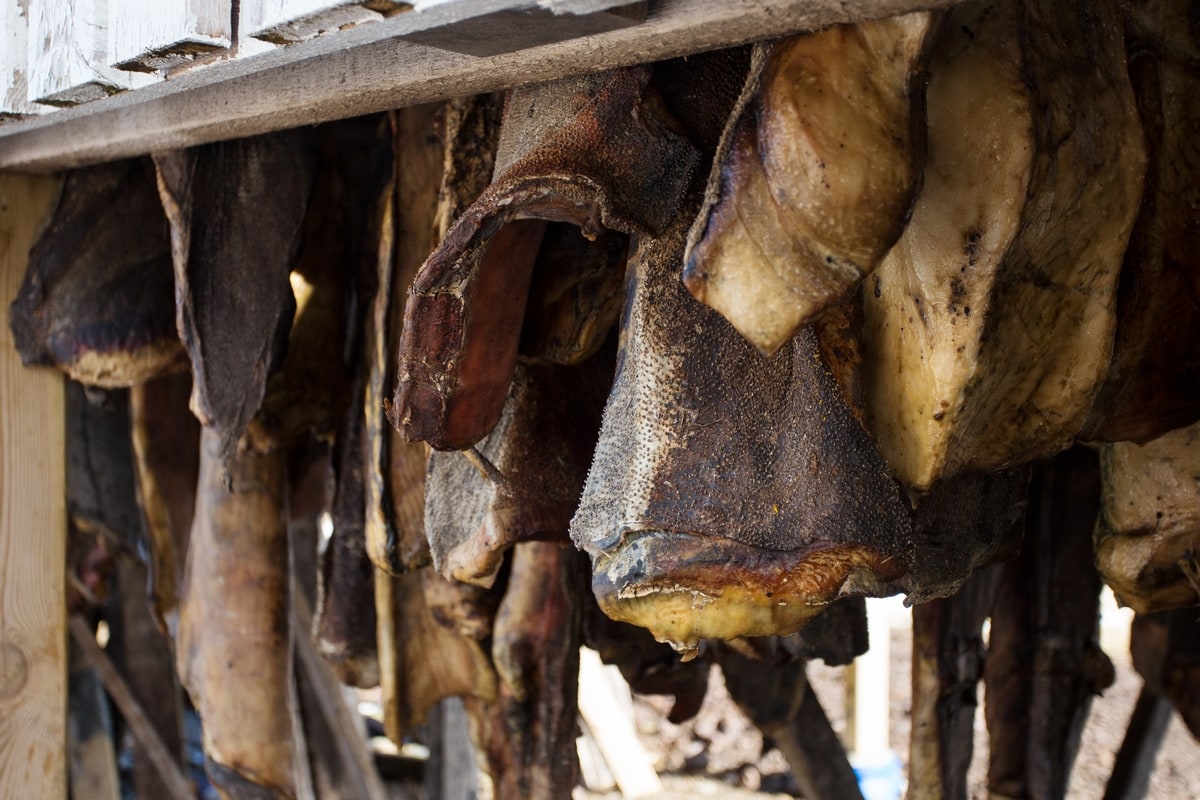
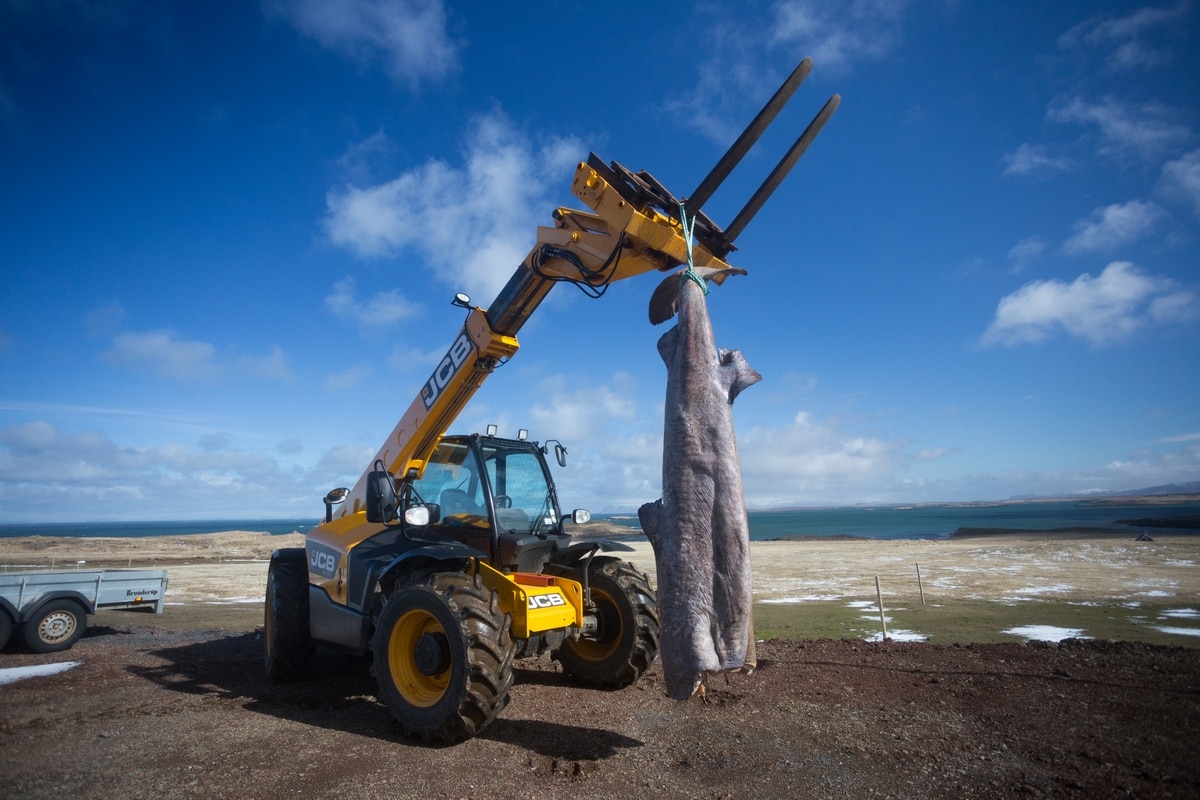
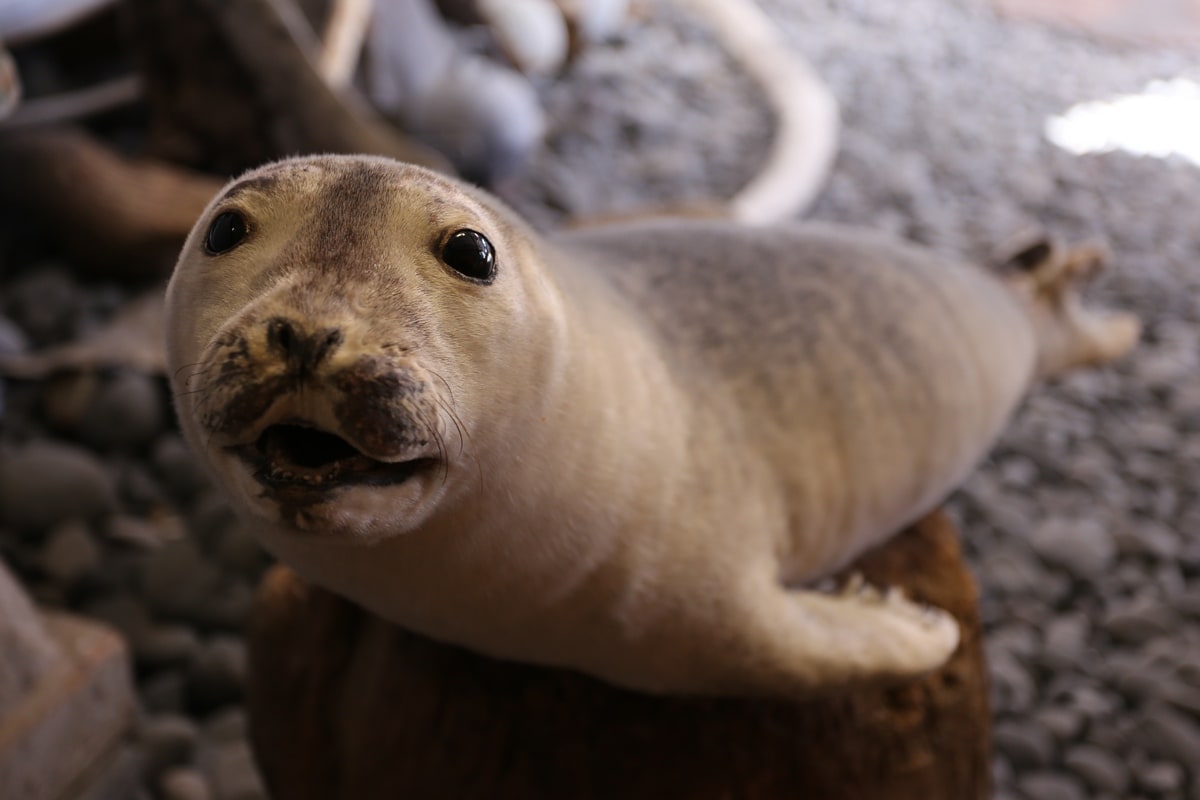

I had to comply, as a food blogger.





Una delle cose che più mi ha impressionato dell’Islanda: il costo del cibo. Mi avevano detto tutti che erano costi decisamente fuori dalla norma, ma non mi aspettavo così tanto. Per rimediare in qualche modo spesso si faceva una mini spesa al supermercato (non che lì la materia prima costi troppo meno).
Per quanto riguarda il cibo tradizionale invece pensavo peggio. La loro zuppa classica con agnello e verdure è gustosa, e anche un bel piatto di pesce fresco pescato dietro casa è sempre buono! Per sbaglio in un ristorante ho ordinato il famoso squalo “marcio”, l’odore era orribile sembrava ammoniaca, ma una volta assaggiato (da solo senza pane) non è malissimo, per di più me l’hanno servito con una specie di vodka locale per sciacquare la bocca, alla fine sentivo solo FUOCO.
Ah, il museo degli squali me lo sono persa! Scoprirne la lavorazione dev’essere stato interessante. Quella foto con il pescione per aria ha qualcosa di surreale!
Il Brennivin per sciacquarsi la bocca al museo non ce l’hanno servito, probabilmente con quello avrei provato senza pane. Ci va qualcosa che “disinfetti” l’odore di ammoniaca dopo. Quel bel pane nero ha decisamente stemperato il sapore dello squalo, quindi un altro boccone dopo senza pane mi è sembrato troppo. E la zuppa all’agnello dovrò tornare per provarla, magari con più budget per mangiare fuori. Comunque in quanto a prezzi l’Islanda fa concorrenza alla Norvegia (e fa paura, sì). Sono i Paesi più cari in cui sono stata. La Svezia è incredibilmente più accessibile in confronto.
Il museo è stato un’esperienza davvero interessante! Il bel pescione è arrivato dopo che avevamo finito la visita, ci hanno chiesto se eravamo di fretta perché stava per arrivare il camion e abbiamo deciso di aspettarlo. La foto surreale si è ben valsa l’attesa 😀
Mi sie bardzo podobalo na Islandii odkrywanie nowych smakow (zwlaszcza wszystko co zrobione z jagnieciny i blood pudding) 😉 A w hakarl to najgorsza ta gumowa konsystencja – ale dobrze ze sprobowalas, przynajmniej masz kolejne doswiadczenie za soba 😉
Konsystencja i zapach. Ale tez sie ciesze, ze tak wyszlo ze sprobowalam. Bardzo zaluje, ze nie udalo mi sie sprobowac jagniecine. Trzeba bedzie tam kiedys wrocic, moze w zimie tym razem.
Przepraszam, ze tak pozno odpisuje. Potrzebowalam time-off od bloga przes pare tygodni. Ale dzieki wielkie za komentarz.
Omg you are so brave! Can’t believe you actually tried the hákarl hahah I would never dare. I’m 1000% with you though on the whole Iceland budget thing… I did almost the exact same as you when I road tripped across the country. We lived out of a van for a week and made pasta pretty much every night. It was gross, but the only budget friendly option! Eating out would have been at least 10x more expensive haha. I sadly didn’t get to try any delicacies when I was there (unless the Skyr yogurt counts lol) but I guess it’s just a reason to return 😀
Hey Christina, thanks for stopping by 😀 I was so set on not trying hakarl, but then the whole atmosphere at the shark museum kinda convinced me it was the right thing to do. Anyway I haven’t tried the meat soup, so I also have a reason to return 🙂